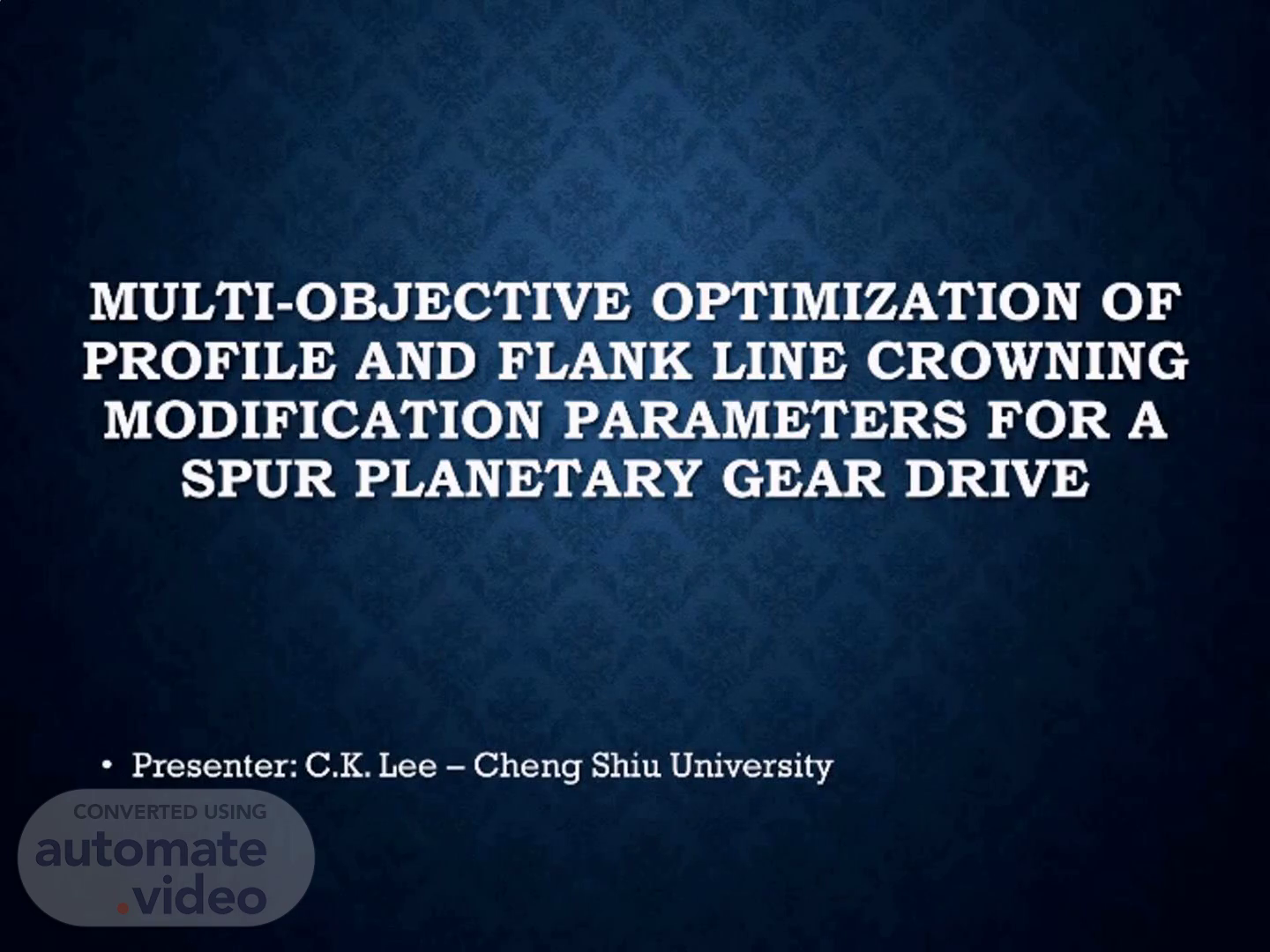Scene 1 (0s)
MULTI - OBJECTIVE OPTIMIZATION OF PROFILE AND FLANK LINE CROWNING MODIFICATION PARAMETERS FOR A SPUR PLANETARY GEAR DRIVE • Presenter: C.K . Lee – Cheng Shiu University.
Scene 2 (24s)
[Audio] The gear tooth modification has been widely recognized as an effective method to enhance the performance of transmission systems. By modifying the shape of gear teeth, it is possible to reduce friction losses, improve load distribution, and minimize noise generation. We optimize the profile and flank line crowning modification parameters for an NGW involute spur planetary gear drive using a multi-objective optimization framework. This approach considers multiple objectives simultaneously, including efficiency, durability, and noise reduction. Our goal is to identify the optimal combination of parameters that can achieve the best overall performance of the gear drive..
Scene 3 (1m 4s)
[Audio] The methodology used in this study involves four key steps. First, we employed Uniform Design to create a systematic experimental plan for exploring the various parameters involved. This ensured that our experiments were well-designed and efficient. Next, we utilized Entropy-weighted TOPSIS, a multi-criteria decision-making technique, to rank the different parameter settings based on their performance. To ensure smooth adjustments between these settings, we applied Thin-Plate Spline Interpolation. Finally, we fine-tuned the optimal parameters using the Nelder-Mead Simplex Method, a powerful optimization algorithm..
Scene 4 (1m 43s)
[Audio] The optimized parameters for this spur planetary gear drive include profile crowning with a value of 21.73 micrometers, which helps reduce stress concentrations. Additionally, flank line crowning has been optimized to 3.24 micrometers, allowing for optimal load distribution and stability. These modifications aim to enhance the overall performance of the gear drive..
Scene 5 (2m 8s)
[Audio] The key performance improvements achieved through the optimization of profile and flank line crowning modification parameters for a spur planetary gear drive include a 52.5% reduction in peak-to-peak transmission error, a 22.3% decrease in system power loss, and a 0.18% increase in transmission efficiency. Additionally, there was an 18.7% - 21.3% increase in micro-pitting safety factors, and improved safety factors for critical components such as the sun, planet, and ring gears..
Scene 6 (2m 44s)
[Audio] The results of our study demonstrate significant improvements in the performance of the spur planetary gear drive. We have achieved improved load distribution, resulting in reduced friction losses. Additionally, we have enhanced stability under dynamic conditions, ensuring reliable operation. Our numerical simulations have confirmed a reduction in transmission error and power loss, indicating increased efficiency. Furthermore, we believe that these findings can be applied not only to spur planetary gear drives but also to other types of gears, such as helical and bevel gears. Finally, we plan to explore further opportunities for improvement through AI-based optimization and experimental validation..
Scene 7 (3m 27s)
[Audio] The optimization framework we developed is systematic and effective for planetary gear drives. We integrated multiple optimization techniques to achieve robust gear modification, resulting in improvements in efficiency, durability, and reliability. Our optimized design also has potential applications in various industries like automotive, aerospace, and industrial machinery..
Scene 8 (3m 50s)
[Audio] If you need any further information, please feel free to contact me, C K Lee, at Cheng Shiu University. I will be happy to assist you with any questions or concerns you may have regarding this research. Thank you..
